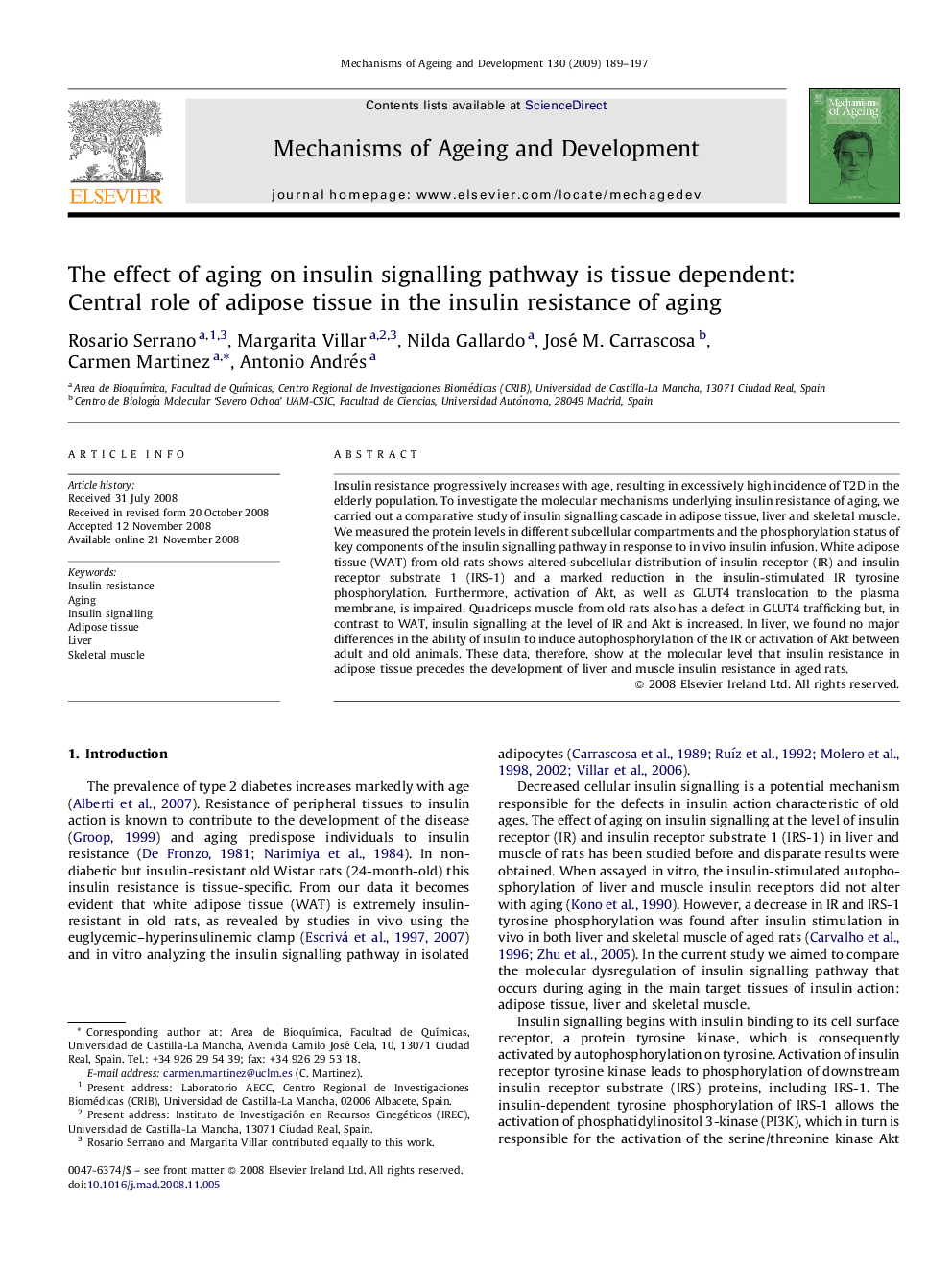| Article ID | Journal | Published Year | Pages | File Type |
|---|---|---|---|---|
| 1919784 | Mechanisms of Ageing and Development | 2009 | 9 Pages |
Insulin resistance progressively increases with age, resulting in excessively high incidence of T2D in the elderly population. To investigate the molecular mechanisms underlying insulin resistance of aging, we carried out a comparative study of insulin signalling cascade in adipose tissue, liver and skeletal muscle. We measured the protein levels in different subcellular compartments and the phosphorylation status of key components of the insulin signalling pathway in response to in vivo insulin infusion. White adipose tissue (WAT) from old rats shows altered subcellular distribution of insulin receptor (IR) and insulin receptor substrate 1 (IRS-1) and a marked reduction in the insulin-stimulated IR tyrosine phosphorylation. Furthermore, activation of Akt, as well as GLUT4 translocation to the plasma membrane, is impaired. Quadriceps muscle from old rats also has a defect in GLUT4 trafficking but, in contrast to WAT, insulin signalling at the level of IR and Akt is increased. In liver, we found no major differences in the ability of insulin to induce autophosphorylation of the IR or activation of Akt between adult and old animals. These data, therefore, show at the molecular level that insulin resistance in adipose tissue precedes the development of liver and muscle insulin resistance in aged rats.
